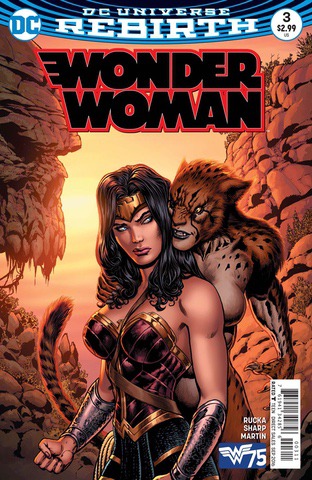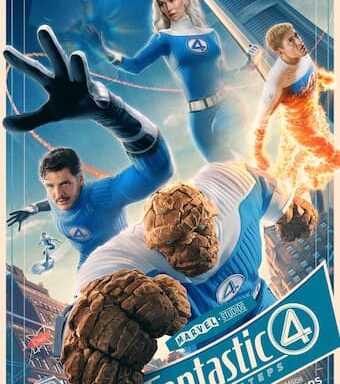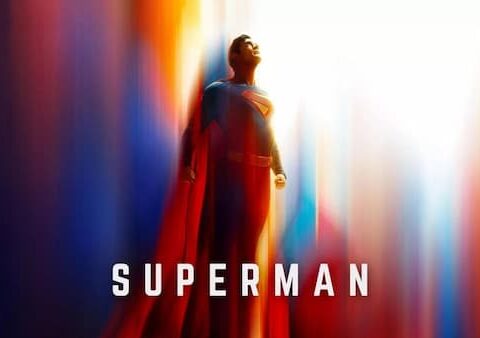This is a curt track-back through several months of Wonder Woman comic books, following the DC Rebirth retooling.
It’s a series that started off superbly, providing a rich reorientation for anyone wanting a fresh new start-point for their Diana Prince adventuring.
It didn’t last, however – in terms of quality.
But Wonder Woman Rebirth #1 was good. Really good.
And a single comic book was able to get me interested in the Wonder Woman mythology again for the first time in a very long while.
I’ve dipped in and out of Wonder Woman comics over the years, but haven’t been able to establish a real relationship with any Wonder Woman title, tending instead to stay connected with Diana via sporadic reading of Justice League books.
Recently I’d been re-acquainting myself with some of Babylon 5 creator J. Michael Strazynski’s run on Wonder Woman from a few years ago. That had helped enthuse me even more for a new Wonder Woman series.
The premise here – of a Diana Prince struggling to reconstruct her own backstory, her past, and there being two different, conflicting ‘stories’ – is a really rich, interesting one.
Rebirth #1 throws us right into the dilemma from the outset, and then builds it up slowly, allowing us to experience the confusion and doubt in Diana’s own mind as she tries to piece herself together.
Greg Rucka does a good job introducing us into this confused mind and having us understand Diana’s dilemma. She knows her sense of reality or history is somehow a lie, but that is only the beginning of the struggle. The recurring line or theme is that ‘The story keeps changing’; and it provides a fantastic central premise for a new start-point.
Her thought, “Like spotting a crack in an amphora or hearing a wrong note in a tune…” sums up this ‘splinter in the mind’ effect beautifully.
Of all the DC ‘Rebirth’ releases, this was the one that enticed and engaged me the most and the one that shows the most promise.
As usual with Wonder Woman, anything set in the mythic Greaco-Roman mileu of Themiscyra is rich and absorbing, but in fact this whole issue is equally absorbing. It re-frames Diana Prince and the Wonder Woman mythology nicely, establishes a fantastic premise for rich storytelling and it promises good things to come.
Having different combinations of artists, inkers and pencillers handle different portions of the comic also creates an interesting effect as the book progresses.
The mystery thickens in Wonder Woman #1 (‘The Lies, Part 1’), as we get the first clues of a Truman Show type scenario being behind Diana’s big-time Mandela Effect problems.
This is in fact where I start to falter a little in my hopes for this series, as I would probably prefer a more mystic, esoteric explanation for what’s going on than a mundane/conspiracy type of explanation. Nevertheless, Wonder Woman #1 mostly sustains the intrigue and mystery establised in Rebirth #1, culminating in Diana encountering Cheetah in Olympus.
The story is, from this point, split down two parallel lines every month, exploring Diana’s two different, alternate realities – ‘The Lies’ and ‘Year One’.
Wonder Woman #2, which takes us into the ‘Year One’ narrative, is just as intriguing as the previous installments. It benefits more, in terms of imagery and atmosphere, from its Themiscyra setting, which – as usual – allows for great artistic and visual scope and depth. Those mythic, old-world settings always do it for me and here is no exception.
It is also to Rucka’s credit that he allows the story and the ideas to breathe and to move a suitable pace, like good mystery stories should.
If there’s one curious note to this story, specifically in Wonder Woman #2, it’s that the plot is virtually identical to a story I was reading a year or more ago in the pages of the Captain Marvel & the Carol Corps Secret Wars series.
In that story, Carol Danvers was in an altered reality/timeline where things didn’t feel right too and in that story the first clue to begin shattering the illusion was a foreign pilot/plane suddenly emerging into her world too.
The two stories are so similar that it detracted from my enjoyment of this one a little.
Liam Sharp and Laura Martin’s cover for Wonder Woman #3 is a knock-out, and the book that follows is pretty much everything you’d expect from the cover art. The visuals throughout are effectively evocative and really succeed in both getting the most out of the primeval jungle setting and the deep sense of the love/hate relationship and connection between Diana and Cheetah.
Themiscyra again provides beautiful, evocative settings for Wonder Woman #4.
Nicola Scott and Romula Fajardo Jnr’s illustration and color combinations really do wonders to get the best out of these scenes and settings and the timeless, classical world feel. Frank Cho’s colorless variant cover for Wonder Woman #5 is also superb and I wish I had a full-length poster of it for my wall.
But Themiscyra is beautifully realised and rendered throughout, with every grand or minor interior space, every imaginative outdoor space and its architectural splendour, every amphora or a bit of furniture or surface design, and every character.
Nicola Scott renders this world and its characters with a really delicate flair that makes each panel a pleasure to process. Fajardo’s soft-touch with minimalist-feeling colors also works really perfectly with Scott’s renderings; it isn’t that his colors are minimal, but that they feel that way and seem nicely refrained.

Moreover, the story told here is particularly good. Being, as it is, a Wonder Woman origins reboot or retelling, Rucka’s story does a nice job of recapturing the heart of the Wonder Woman mythology and making it feel fresh, mythic and magical.
The story, as told here, of Diana’s trial to become the Amazons’ champion is on some level simplistic, but in effect it is highly restorative and reinforces the stature of this character. It helps very much, of course, that Scott’s art aids the story so much and really makes Themiscyra’s settings and society feel real and living.
Wonder Woman #5 is the least engaging of the issues up to this point, but the Diana/Cheetah material following from #3 is still enjoyable and well illustrated.
Wonder Woman #6 (‘Year One, Part 3’) is the first issue of this run that sees the quality level wholly drop.
An entirely earth-bound narrative, it fails on more or less every level to entertain or sustain interest, demonstrating more clearly than previous installments that, of the two parallel stories/timelines going on in this series, one is substantially more interesting than the other.
Exacerbating this problem, the book is also visually flat and undynamic; which is curious, given the stellar work by the same artists in previous issues. Wonder Woman #7 restores the quality levels a little, getting back to ‘The Lies’ and continuing the story involving Cheetah, but by this point the series has started to lose a little bit of its initial quality and momentum.
Which probably makes Wonder Woman #8‘s interlude (literally, titled ‘Interlude’) probably a well-timed move.
The story is entirely focused on a backstory of sorts for Barbara Anne Minerva, recounting an episode from her childhood and then from her archaeologist days, as she searches for proof of existence of the Amazons. It’s a fairly lightweight story and it is oddly placed, but it’s an interesting read and opens up potential to visit this story further.
Wonder Woman #9 continues ‘The Lies’, though the story has definitely lost a lot of its momentum and intrigue by this point, the same applying to Wonder Woman #10.
Wonder Woman #11 puts us back on slightly better ground again, as hints of answers begin to emerge and Diana seemingly finds her way back to Themiscyra at last, but only to find something other than what she expects. Wonder Woman #12 – #14 don’t boast anything especially good or interesting, though #14 does give us a clash with Ares.
It’s a shame, at this point, that the series has dropped in quality, given how well it started. It seems to have been a case of strong momentum and purpose quickly evaporating, losing pace. By Wonder Woman #7 or #8 I was losing connection and interest.
The series still promises some interesting turns and developments, which I will keep a look-out for – but devoted, monthly loyalty seems unlikely at this stage.
Nevertheless, I still really adore the first couple of issues of this series – to the extent that I’m even willing to uphold those issues in a vacuum, separately from the rest of the series.




